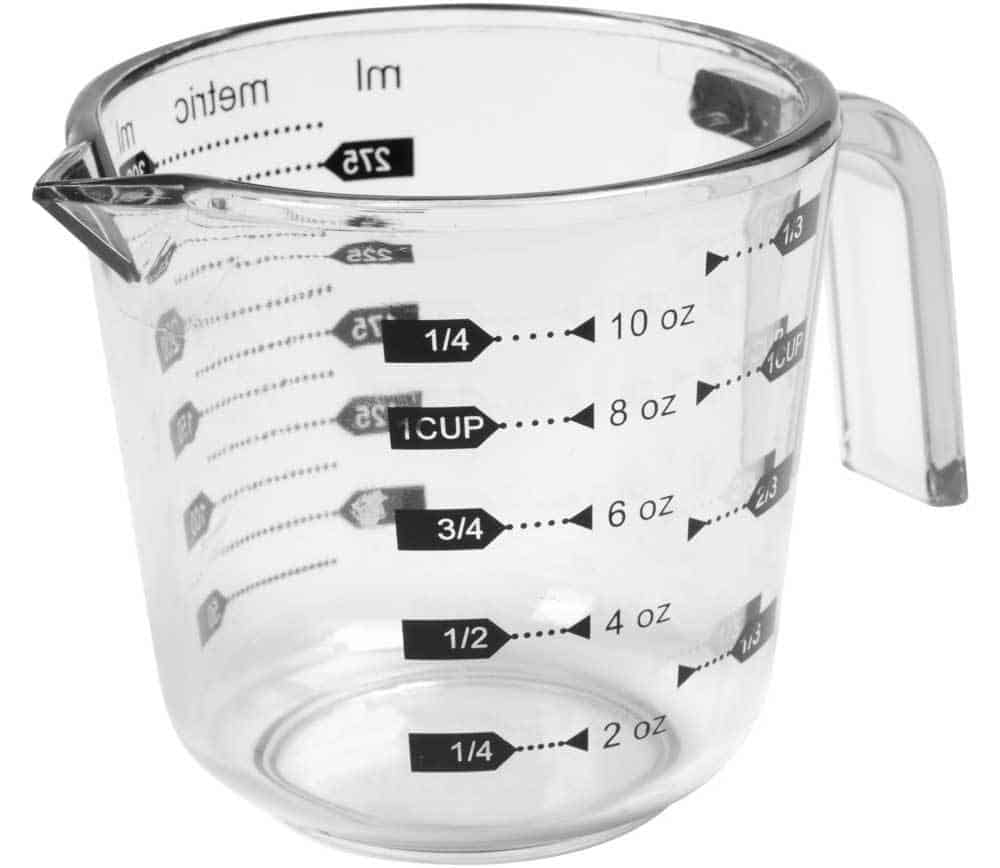This post contains affiliate links. When you buy through our links, we may earn a commission.
How many oz in a quart: Whether you’re a cooking expert or you just love everything to do with the kitchen, it’s not easy to bring together all your ingredients to produce a perfect meal. Once in a while, a recipe can bounce on you, but that doesn’t mean you start doubting your cooking skills. If anything, you’re still an expert, only that you must have skipped a step or used the wrong measurements.
Most of the failures in cooking have to do with measuring the ingredients the wrong way, if not precise enough. Even the simplest recipe can be puzzling if the necessary measurements aren’t provided.
So, whether you’re a cooking guru or a passionate cook, you’ve to familiarize yourself with the common measurements used in the kitchen.
Types Of Ingredient Measuring Equipment
There are several ways you can measure your ingredients in the kitchen. If you’re a professional chef, you must have used either of them to bring together the right amounts into the pot.

The measuring equipment includes:
Household spoons and cups
They’re great for most recipes, but you need to be extra careful as you can easily mess up. Even so, don’t use these for baking – you can easily blunder.
Measuring Spoons and Cups
We have measuring spoons ranging from an eighth to one tablespoon, and measuring cups ranging from a quarter to one cup. They’re easy to use and can work for different types of recipes.
Measuring Scales
We have both digital and non-digital measuring scales. These work for all recipes including baking. Most experts recommend scales for better precision. So, you should start thinking of getting one.
Ingredients Measuring Methods
With the equipment mentioned above, how do you measure your ingredients? We’ve got several methods of measuring ingredients, most of which we use for our daily cooking.
Ingredients Measuring methods include:
Scooping or Spooning
While this is the most common method of measuring, it isn’t all that reliable. It involves using a household or a measuring cup to scoop ingredients into a cup before pouring them into a mixing bowl. The challenge of using this method is that you aren’t always sure of the size of the household cup you’re using, and, therefore, you can easily mess up.
Level Off
Once you’ve scooped ingredients into a cup or spoon, you use a knife to scrape along the surface horizontally to get a flat even surface. However, since you may not know the capacity of the cup, the method isn’t that effective.
Weighing
Here, you use a digital or non-digital scale to measure the weight of all ingredients. Digital scales are the most precise and easiest to read. So, they’re recommended over non-digital scales. However, you should know that sometimes scales don’t take up small quantities. So, you may need to use spooning for such.
Kitchen Measurements
Most ingredients in the kitchen are measured by quantity or volume. For quantity, you can say one onion or diced potatoes, etc. However, the volume can be measured in different ways including spoons, pints, quarts, liters, fluid ounces (oz), and many more.
So, here we’ll focus on quarts and fluid ounces as they’re commonly used by chefs.
Fluid Ounces (OZ)
An oz or a fluid ounce is the amount of water that weighs one ounce. Most cooks use this unit of measurement because it makes it possible to use kitchen scales to measure the amount of fluid. Typically, there are 16 fluid ounces in a pint.
Quart
A quart is simply a quarter of a gallon. We need at least four quarts to make a gallon. It’s also equal to four cups or two pints.
